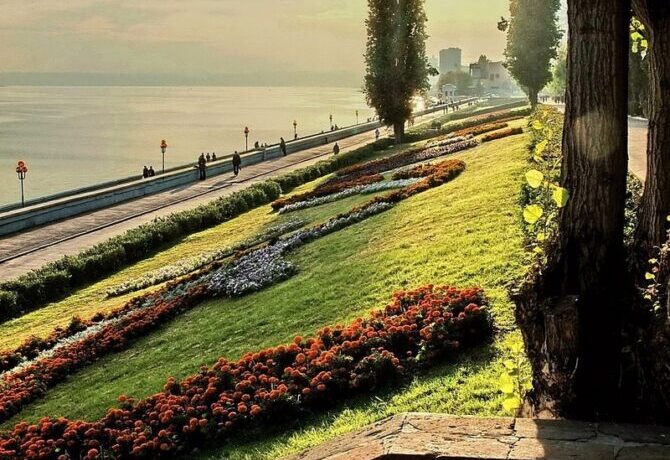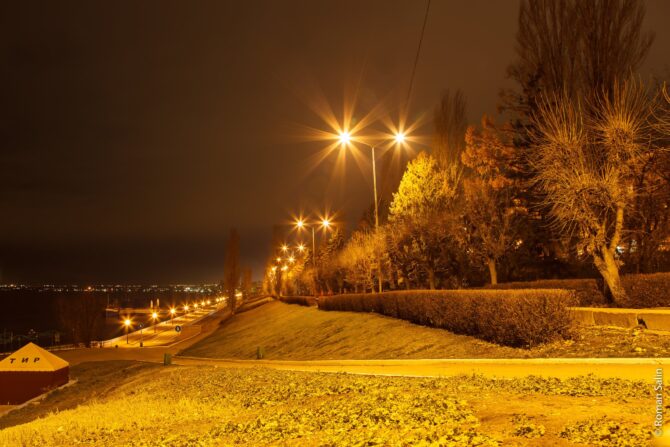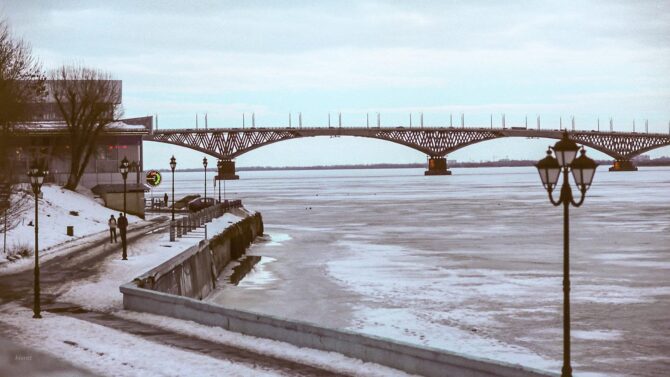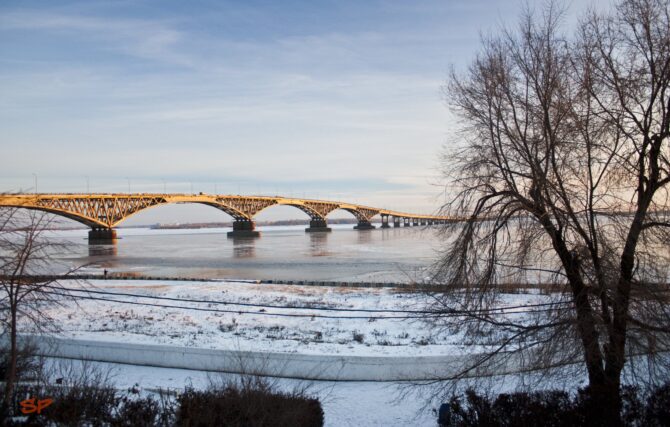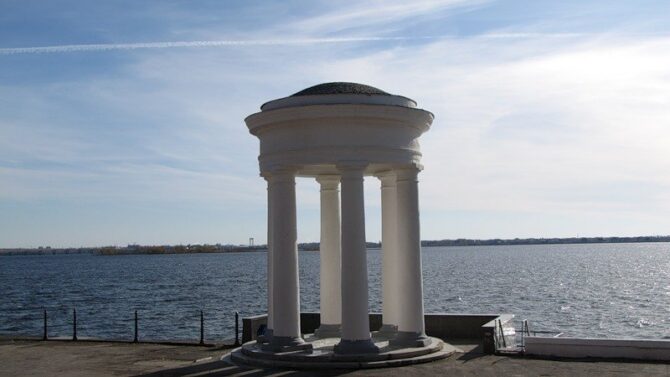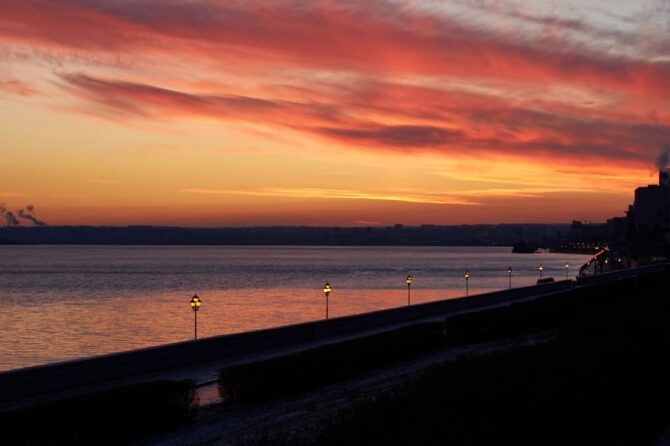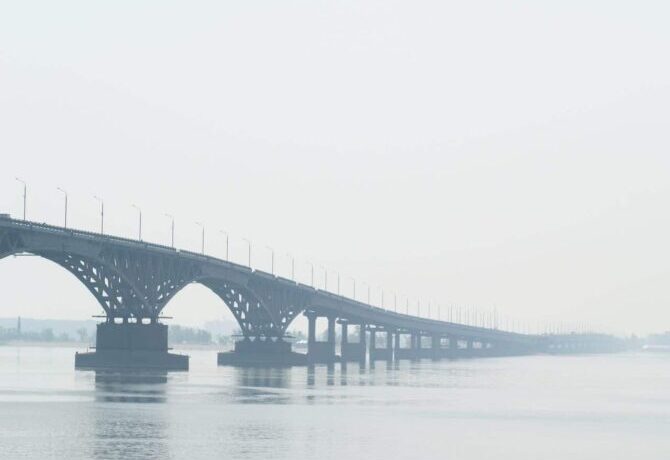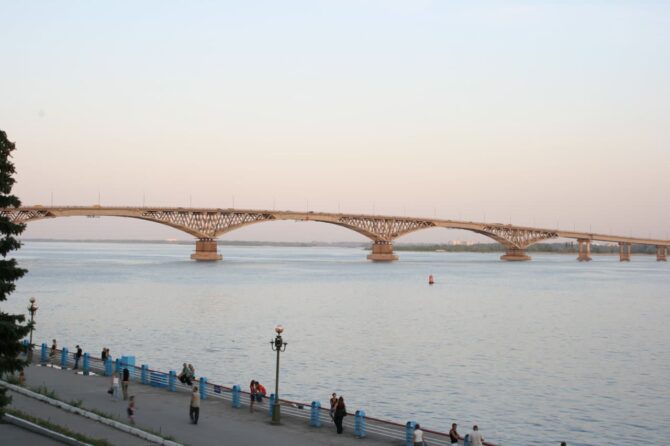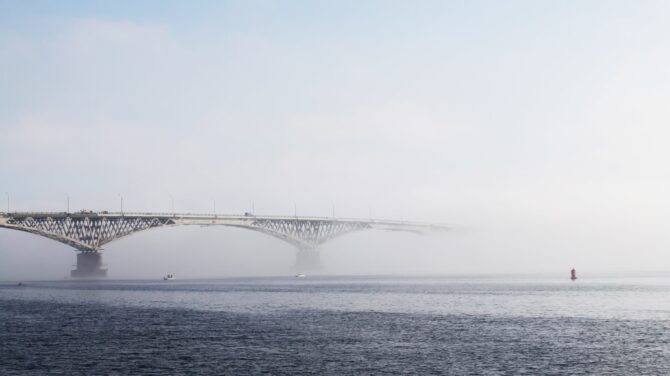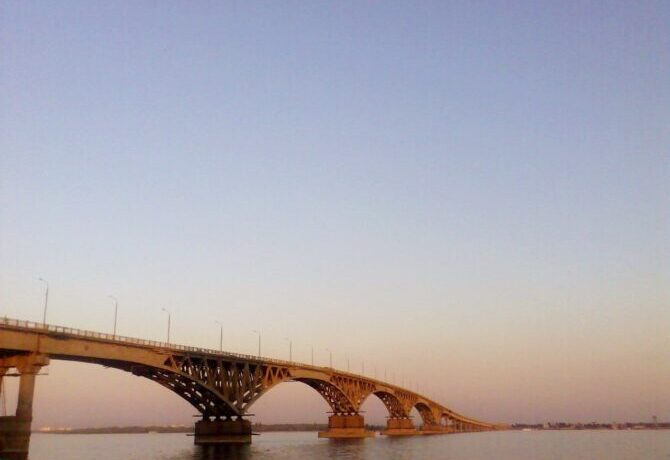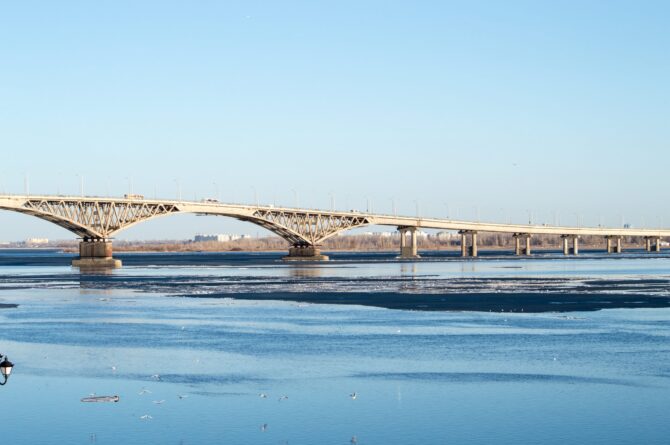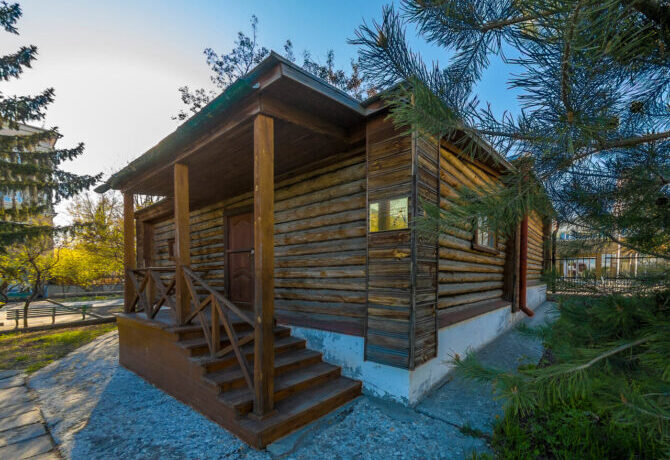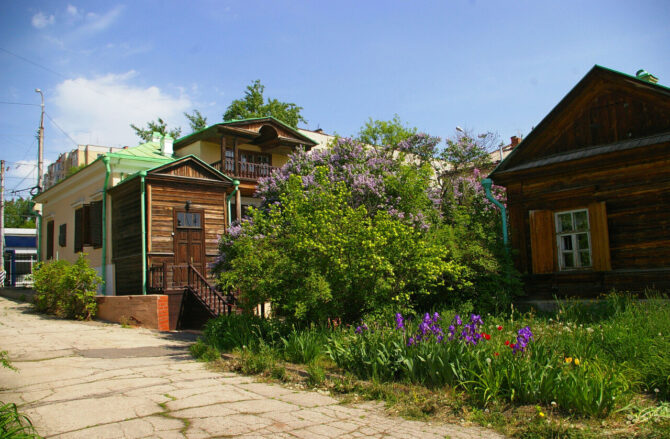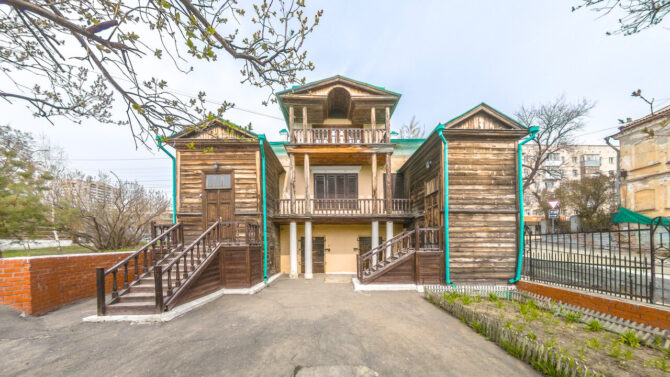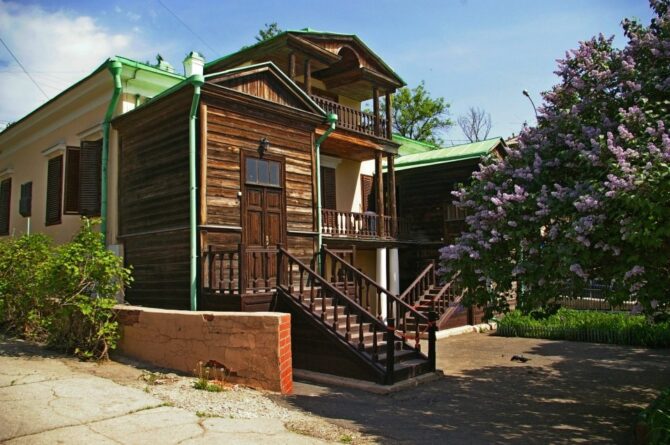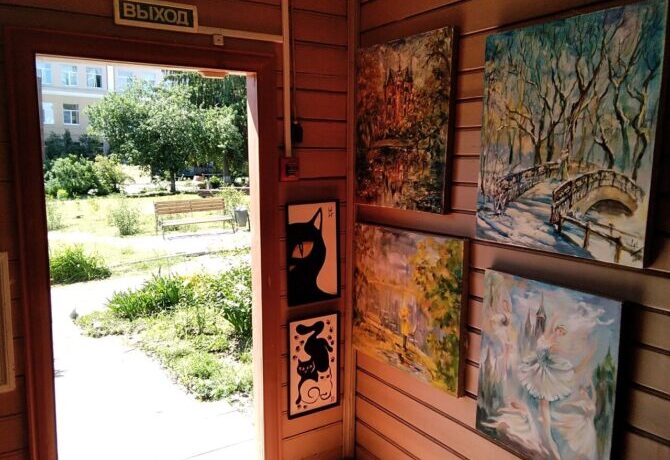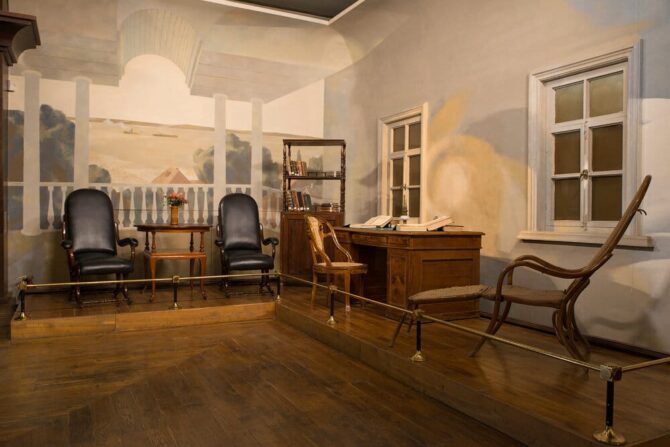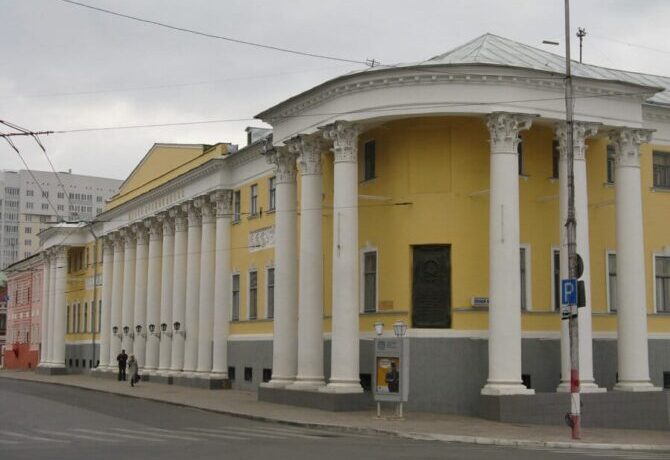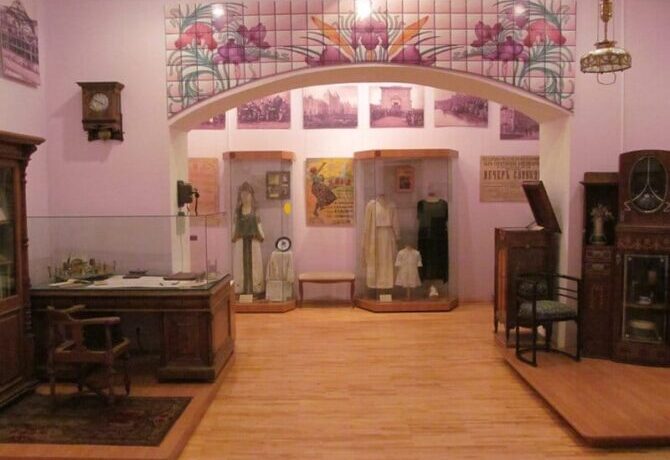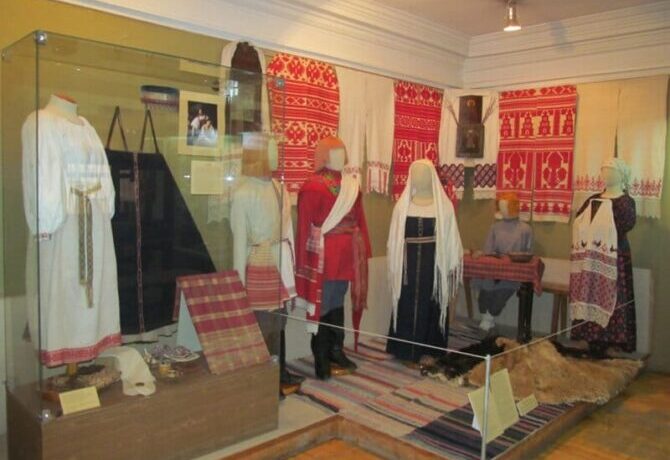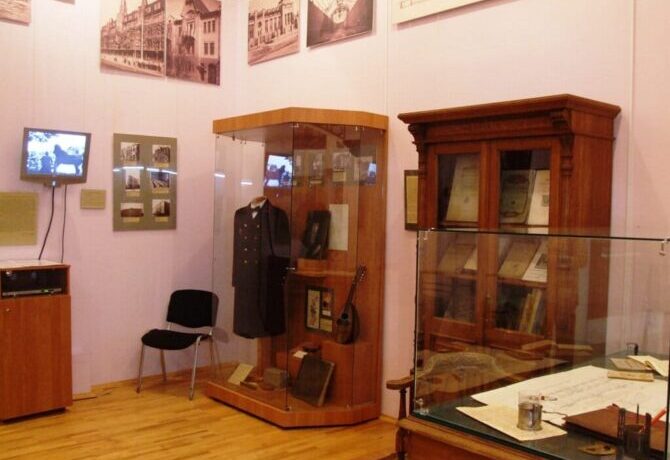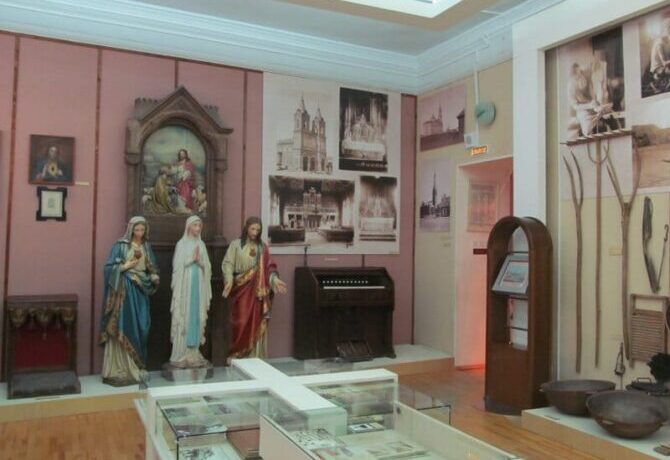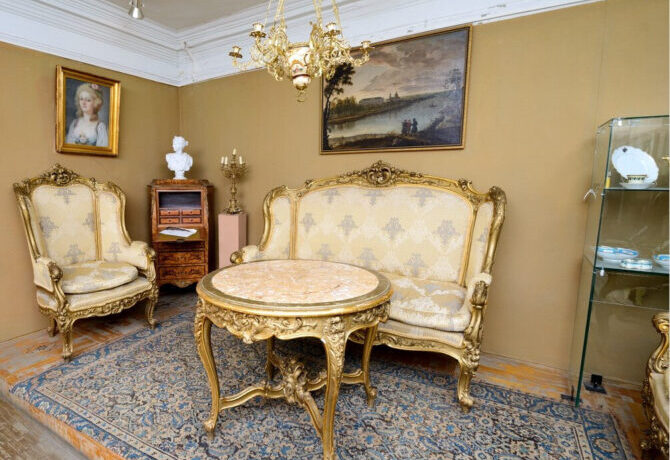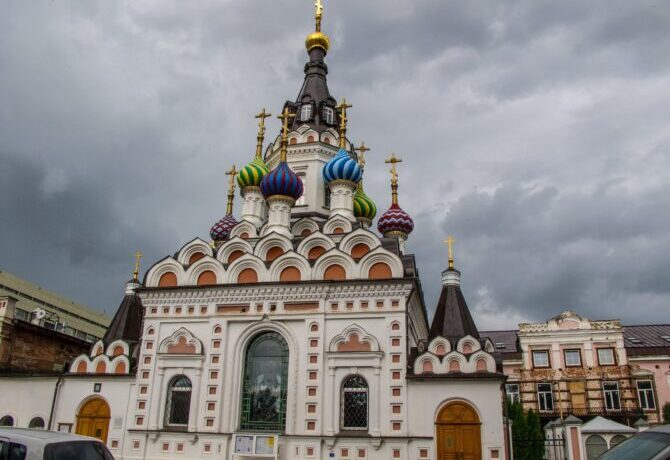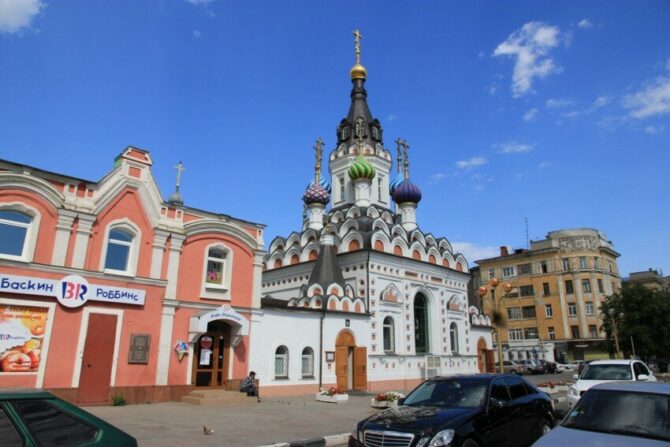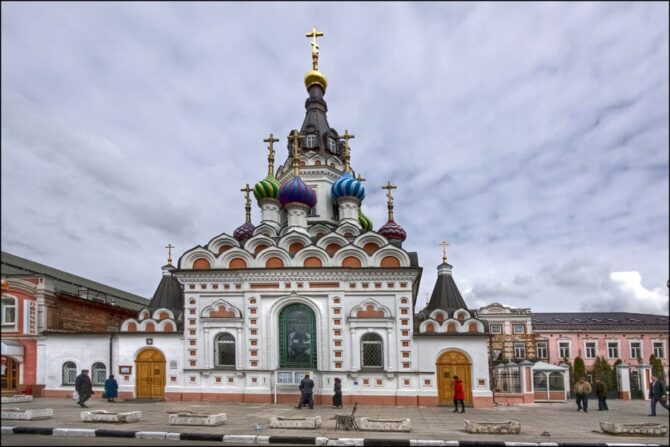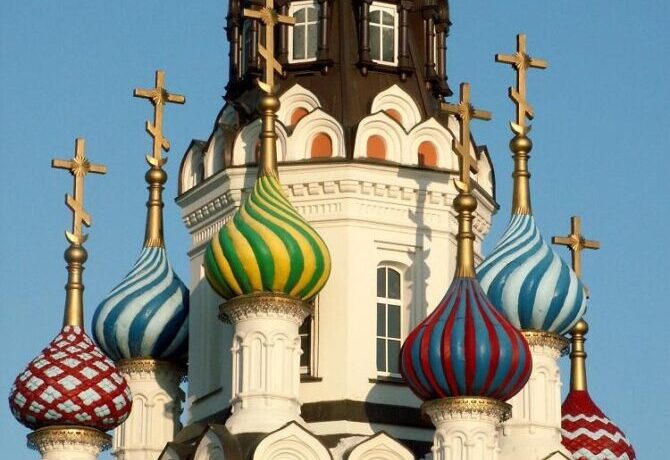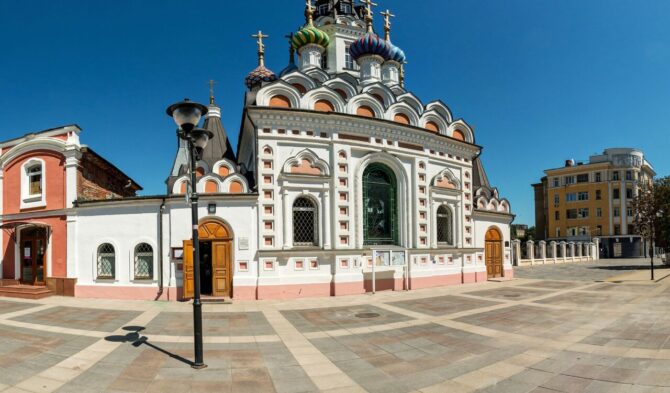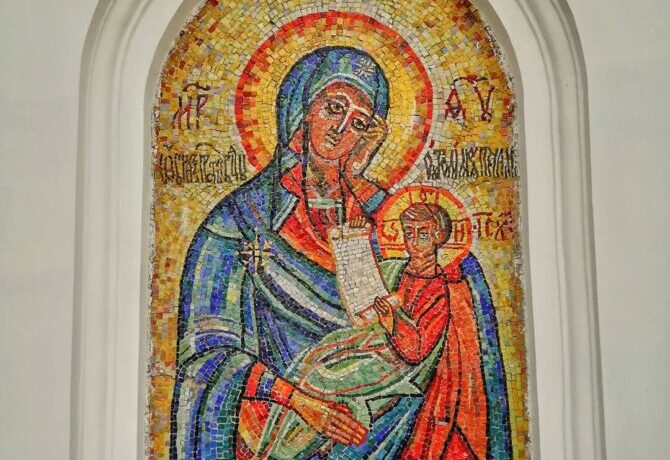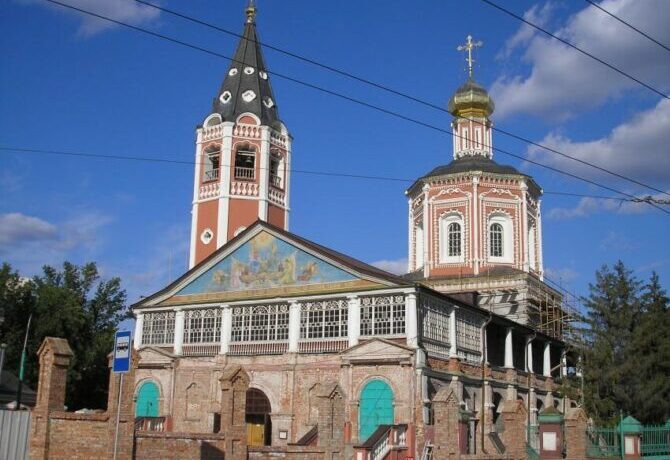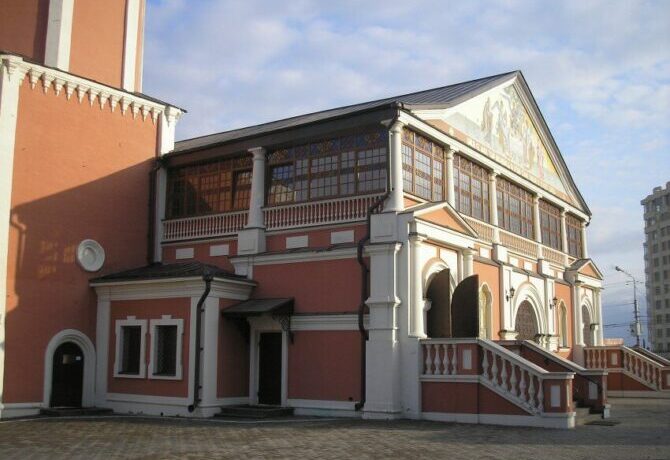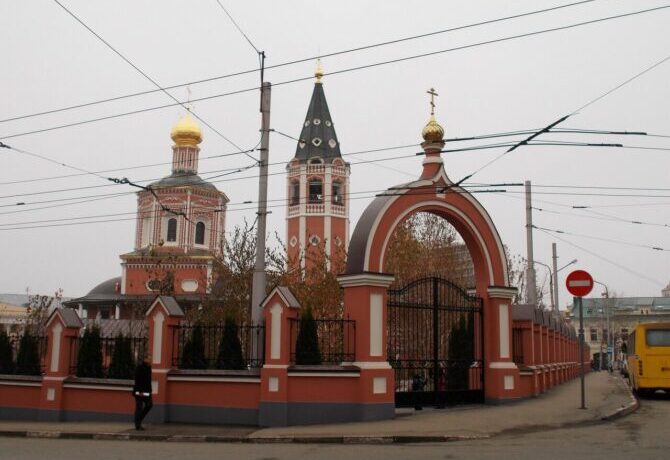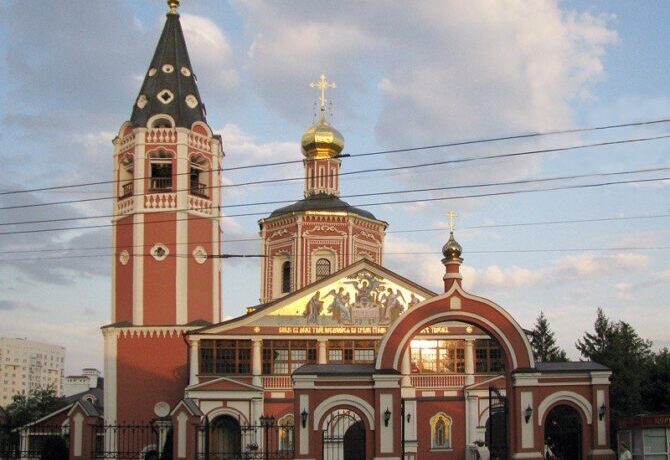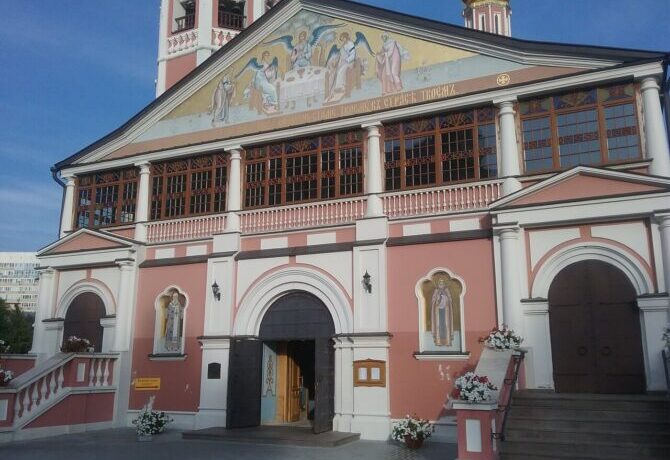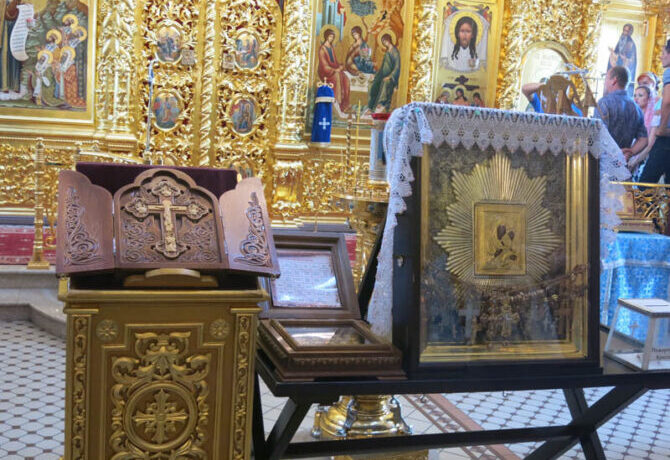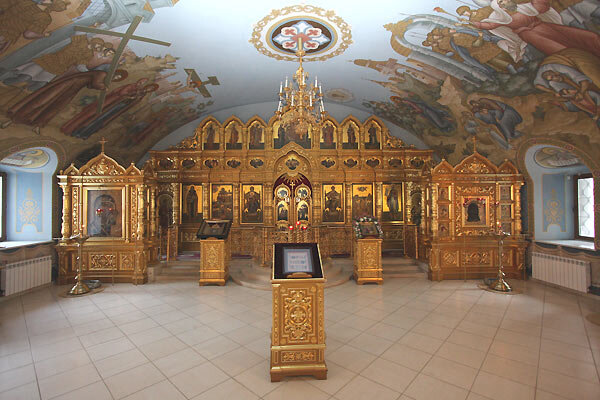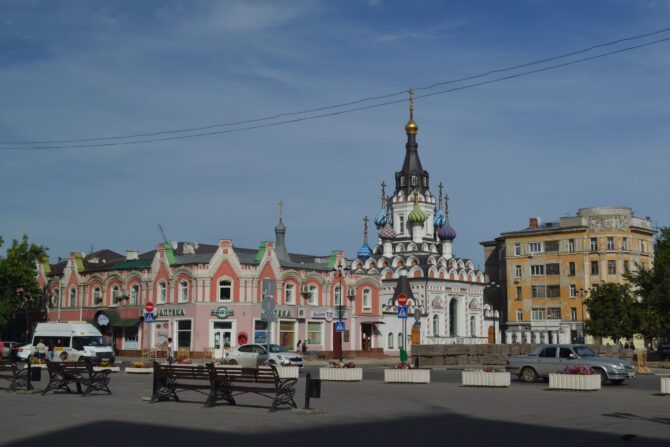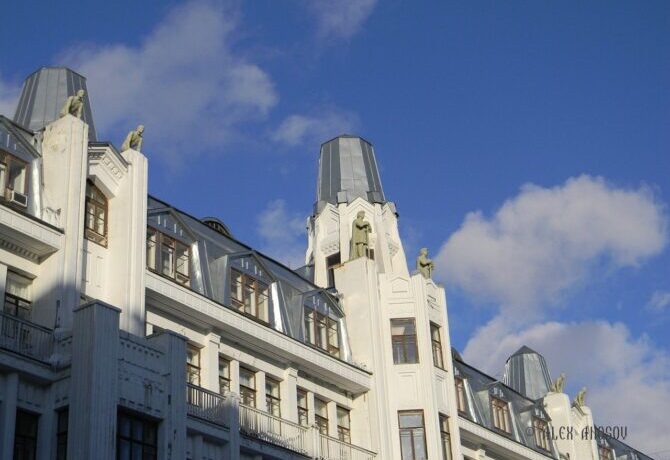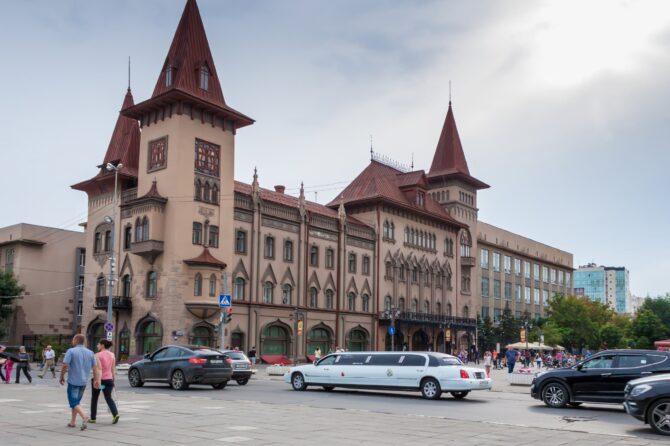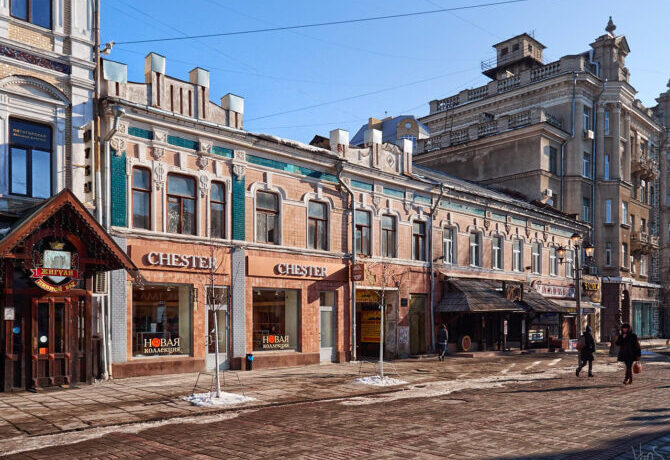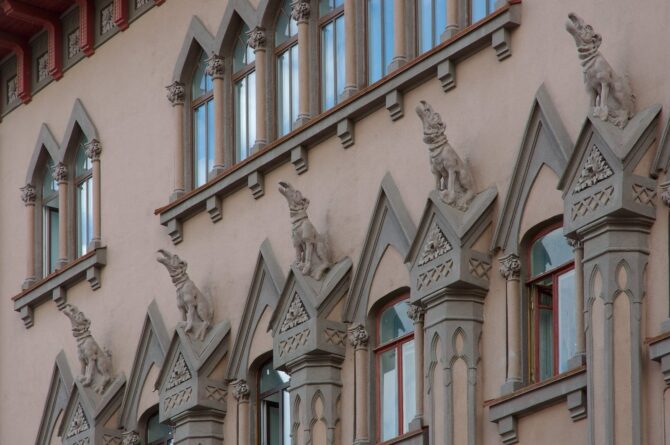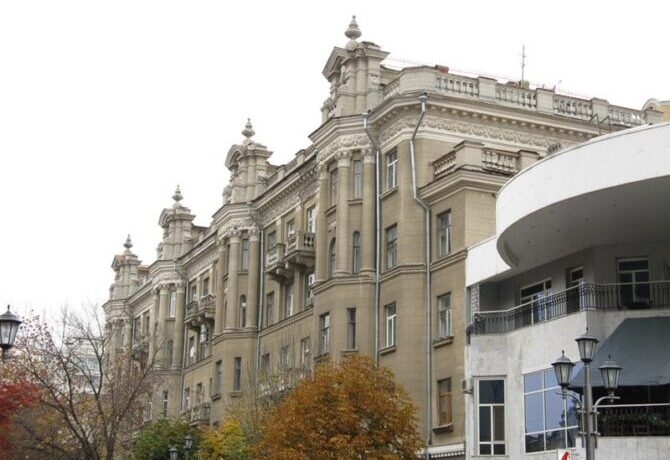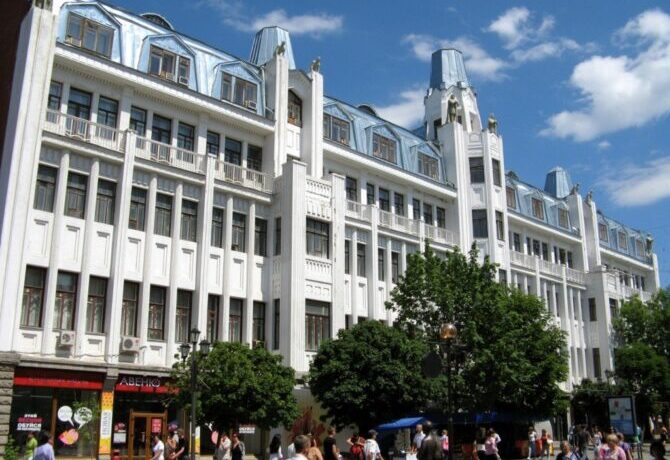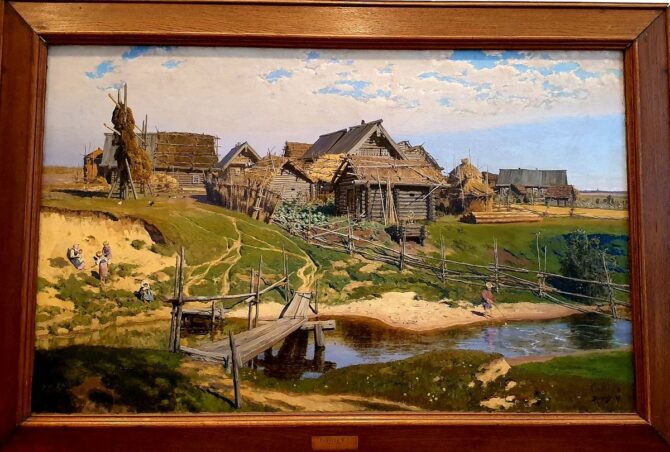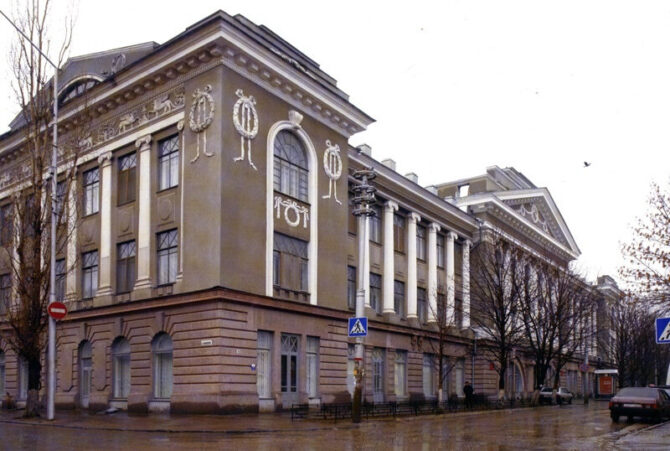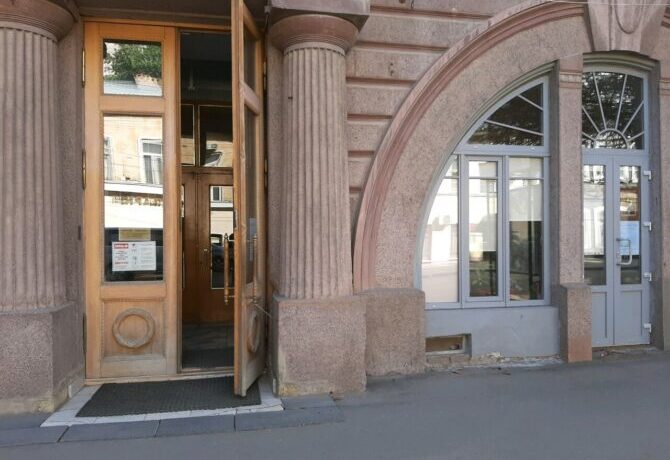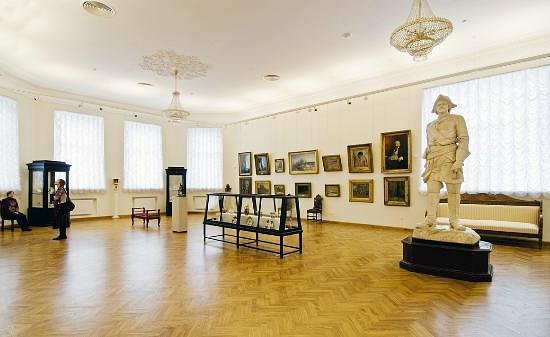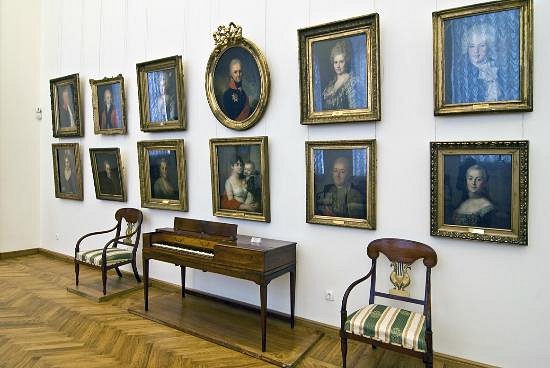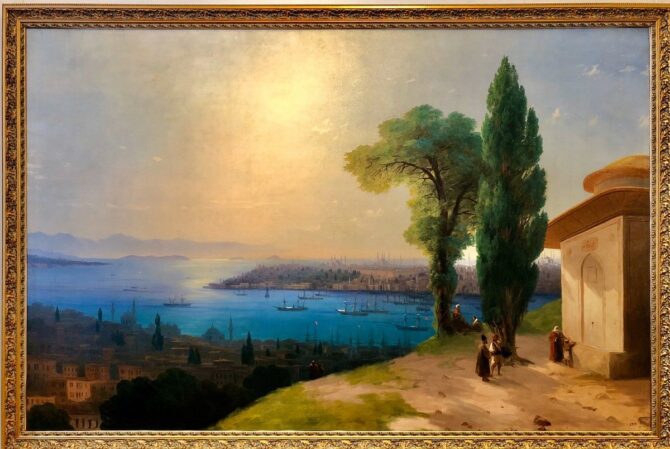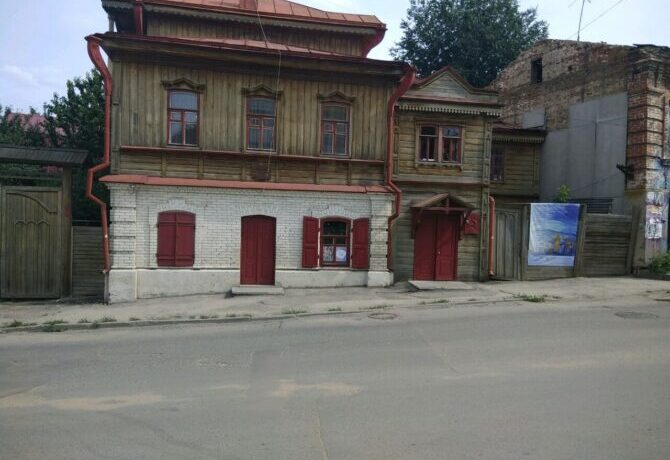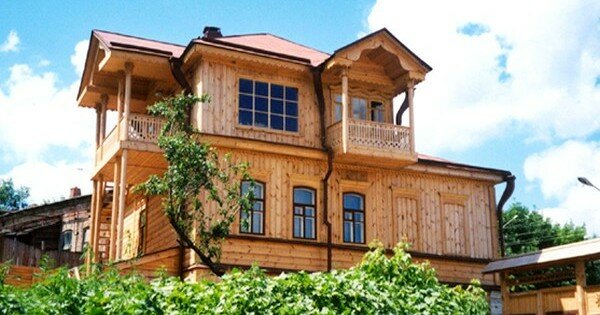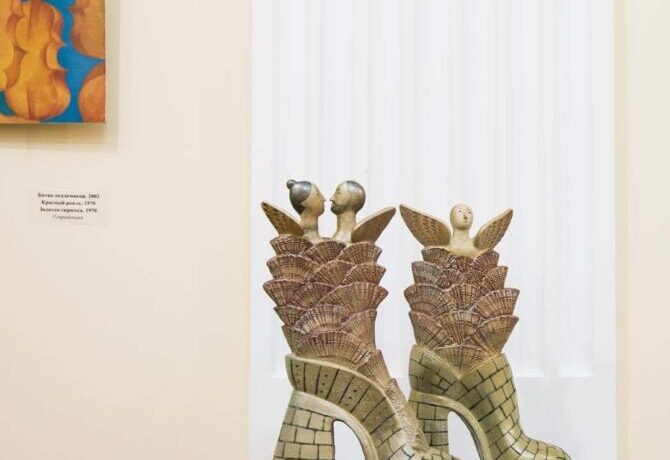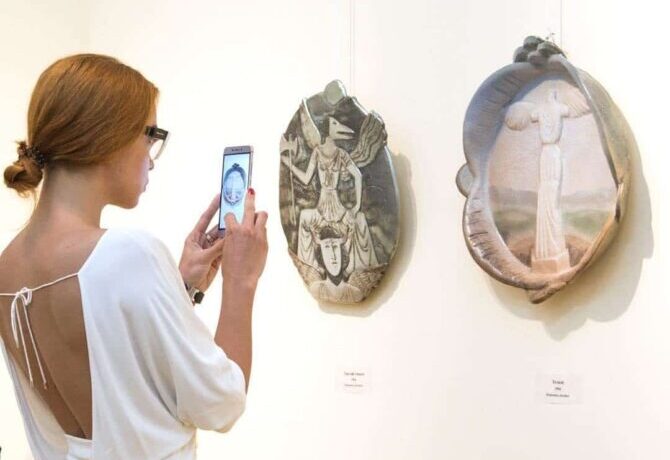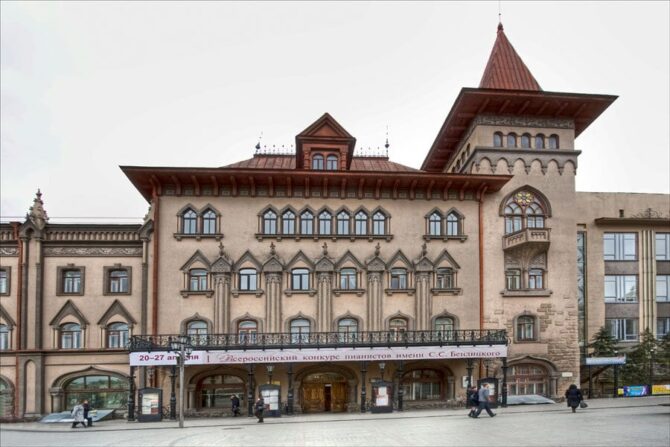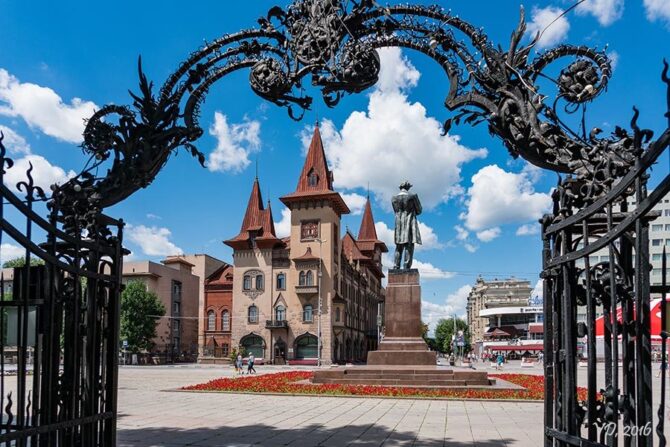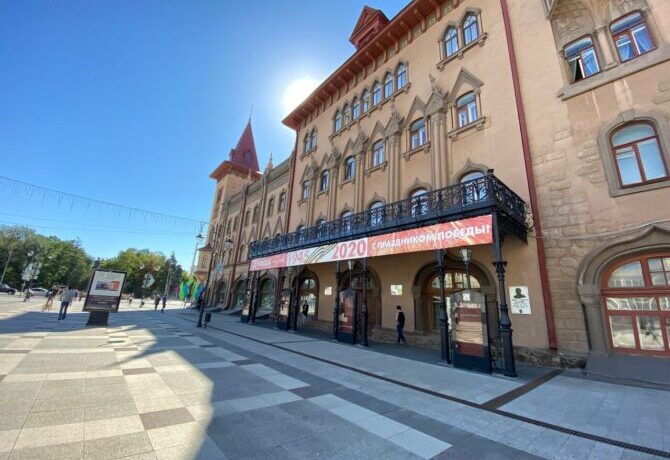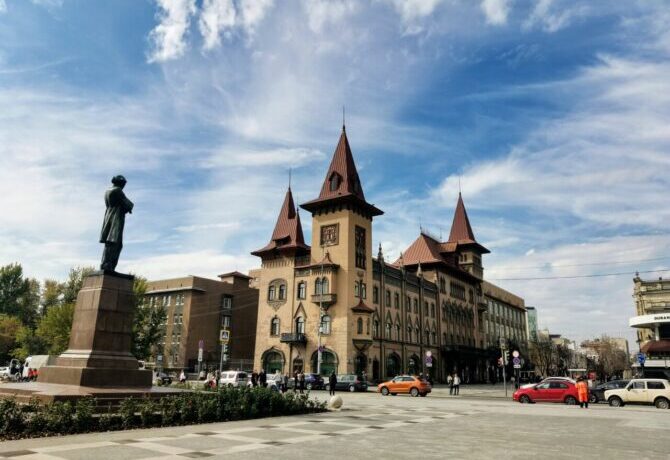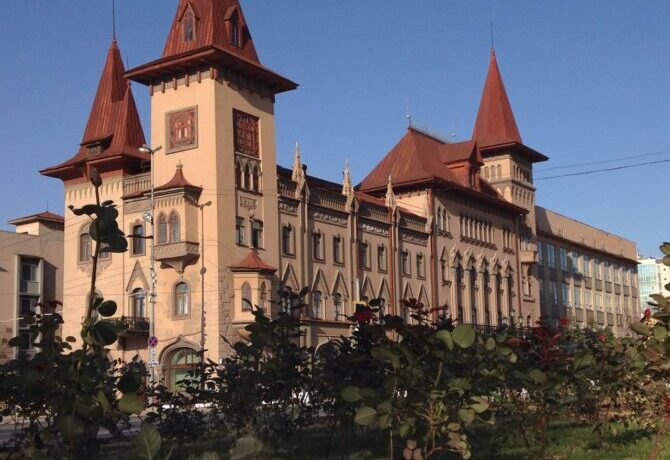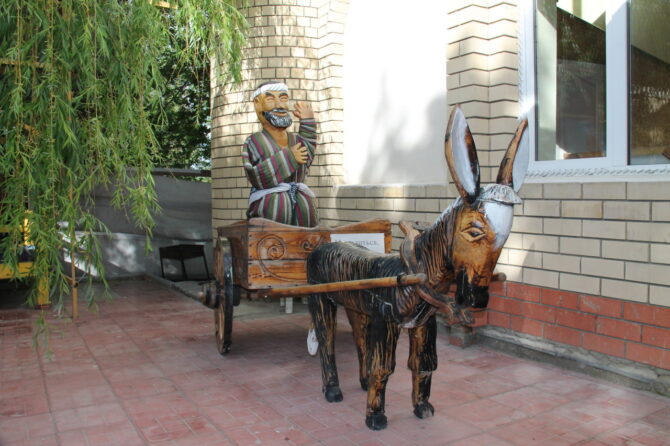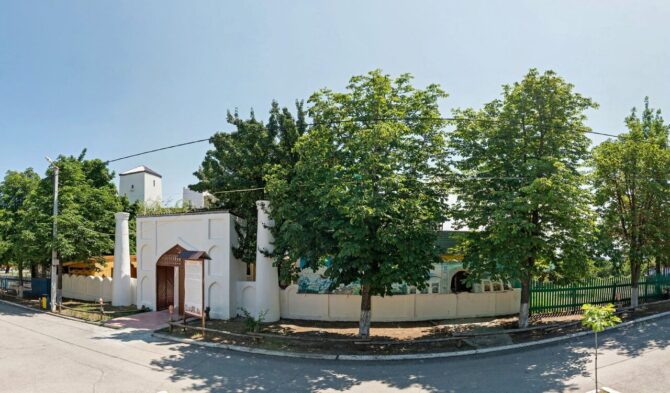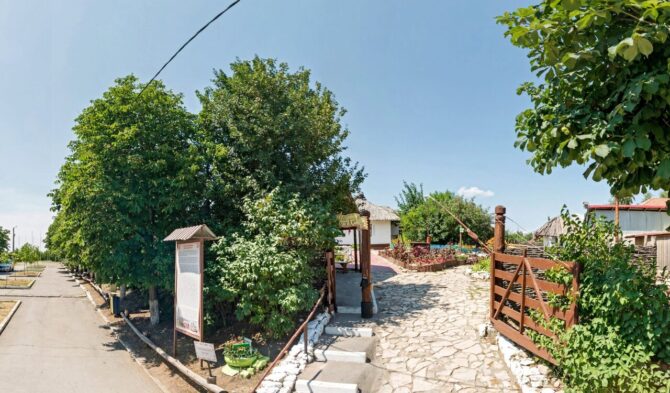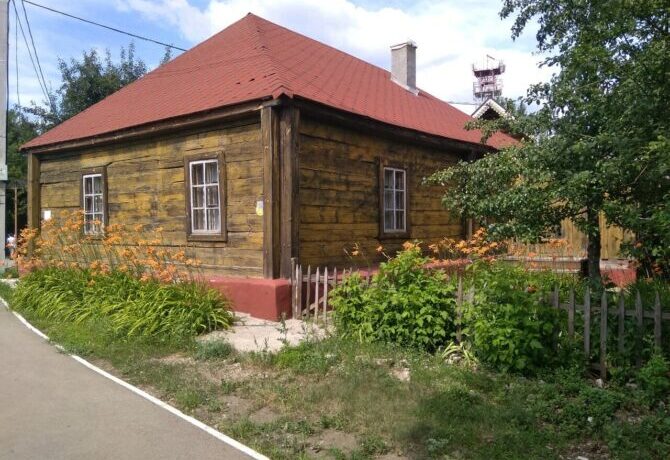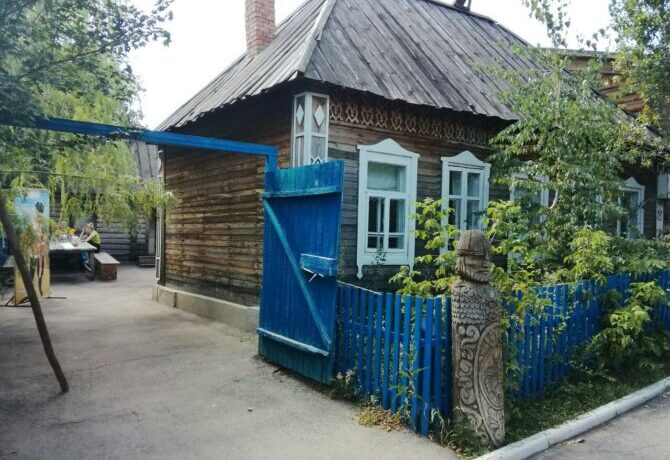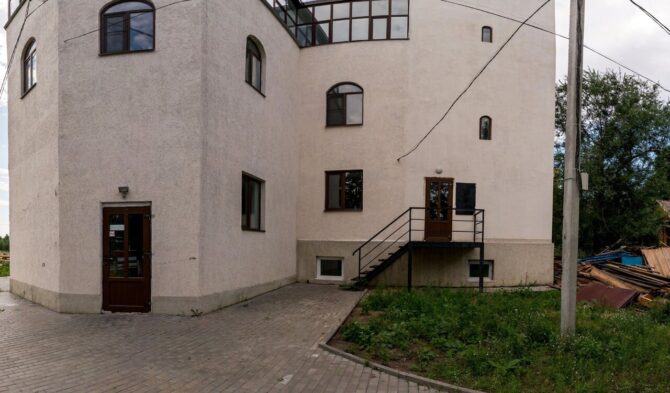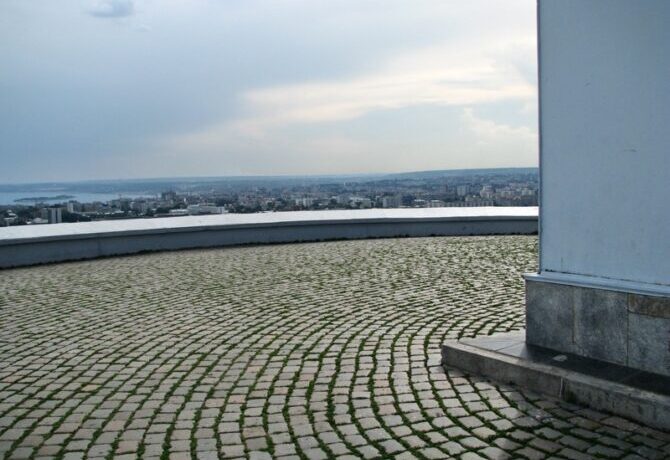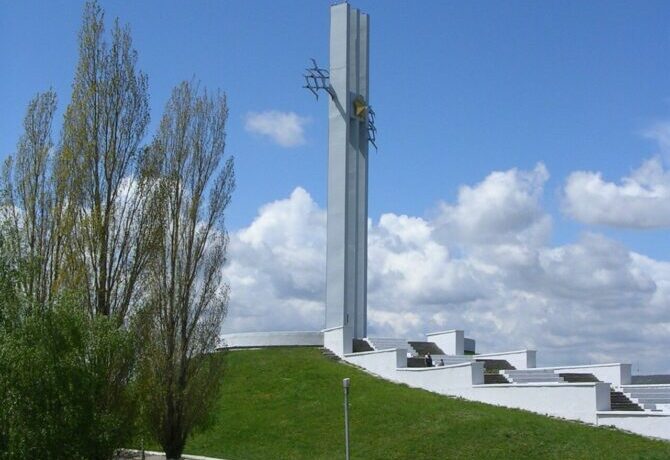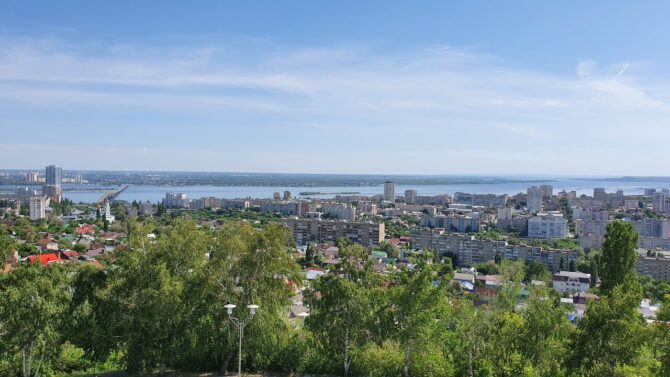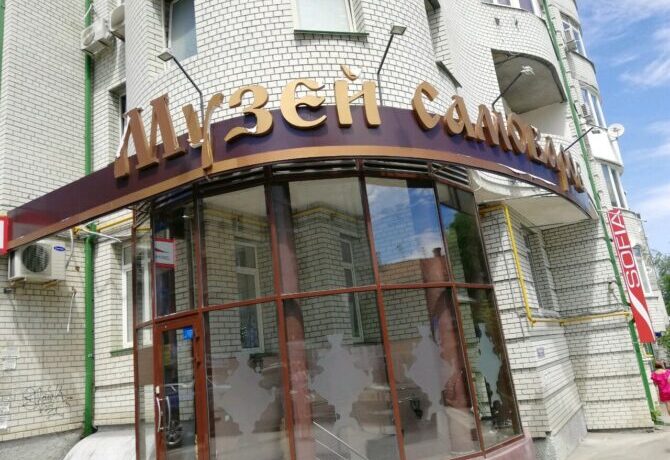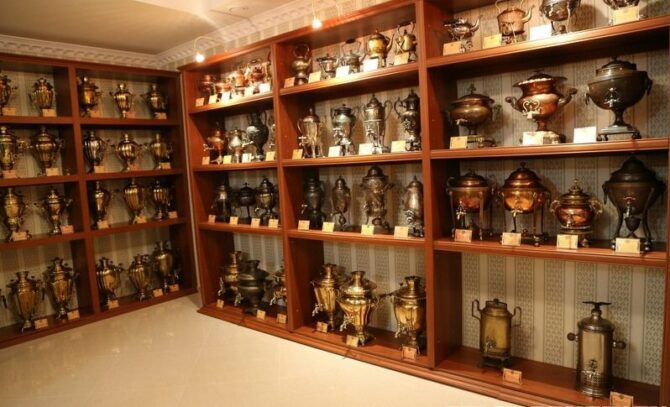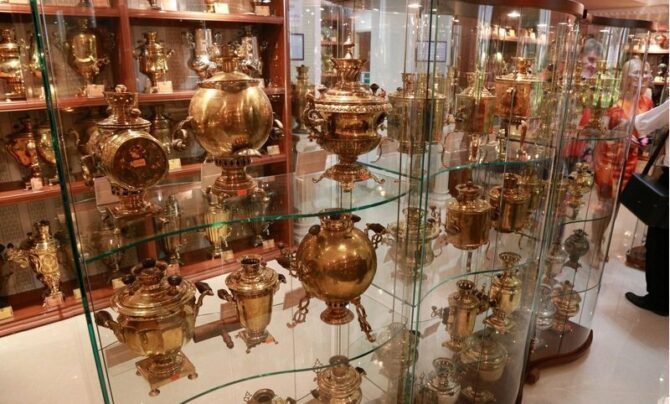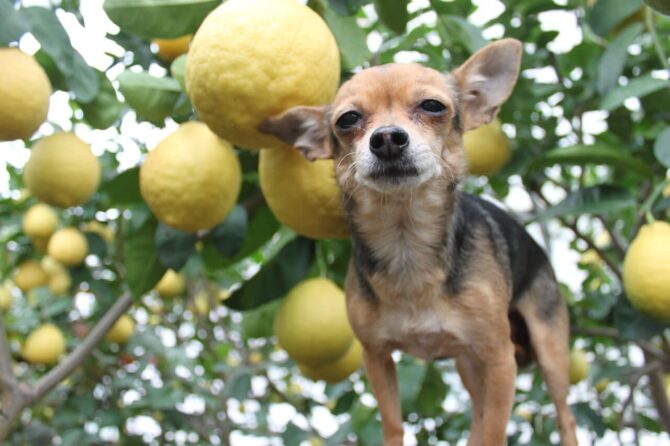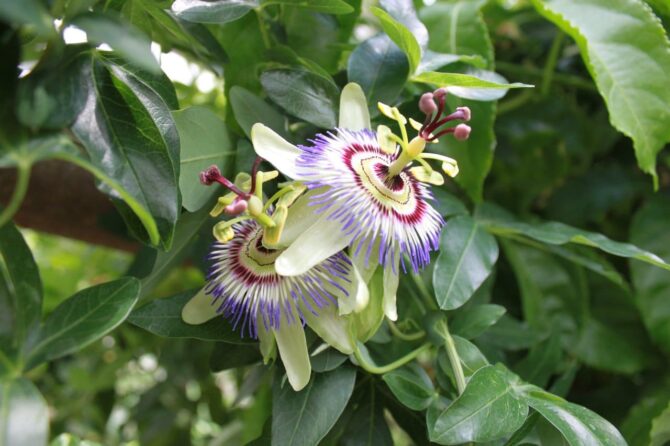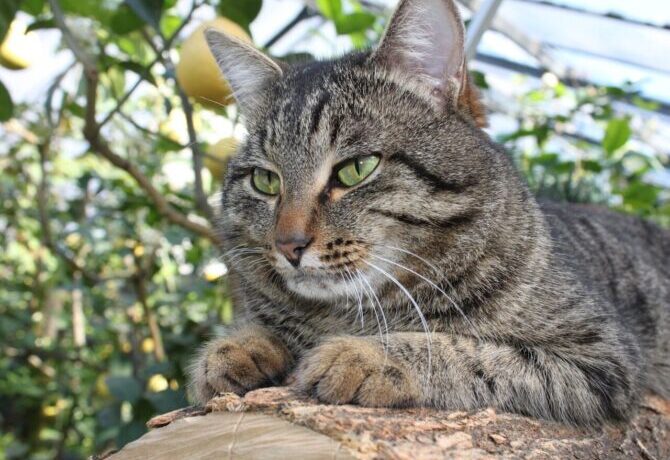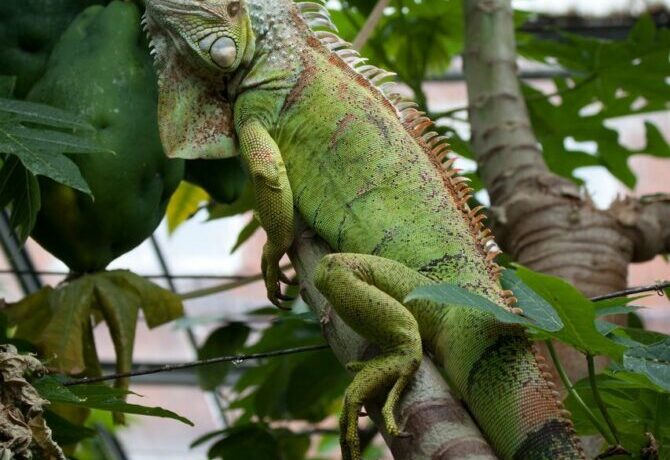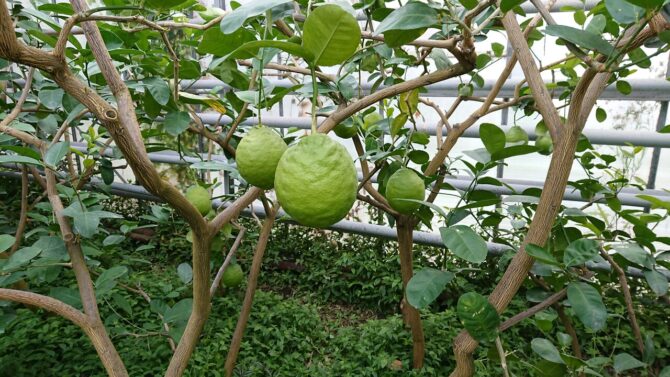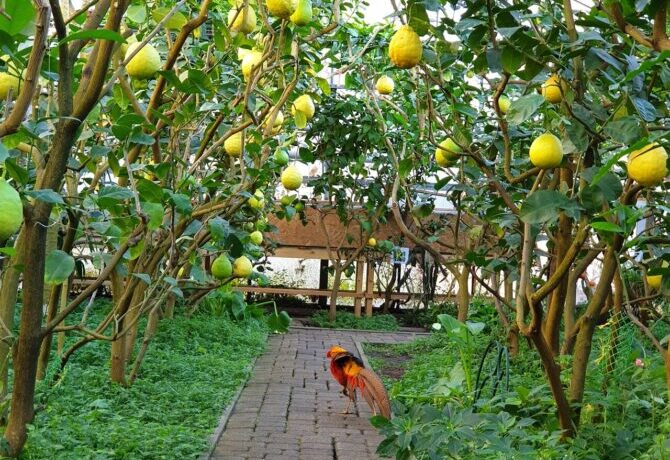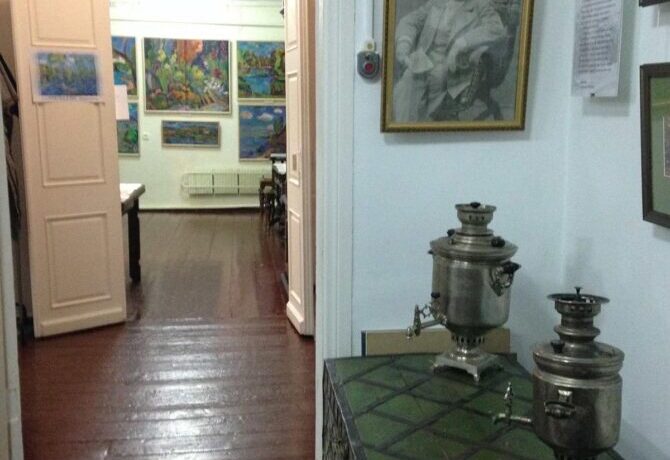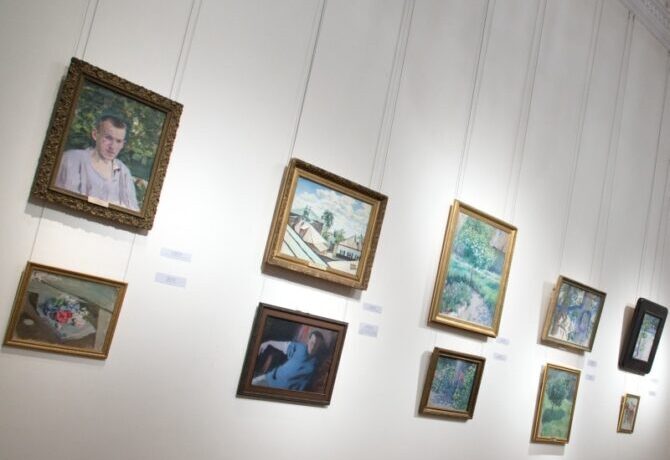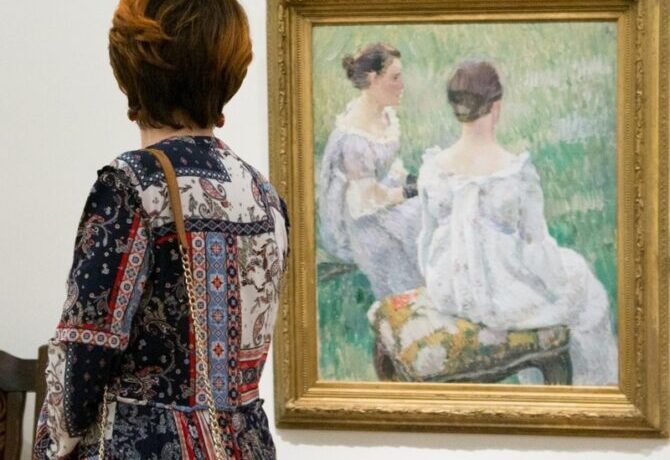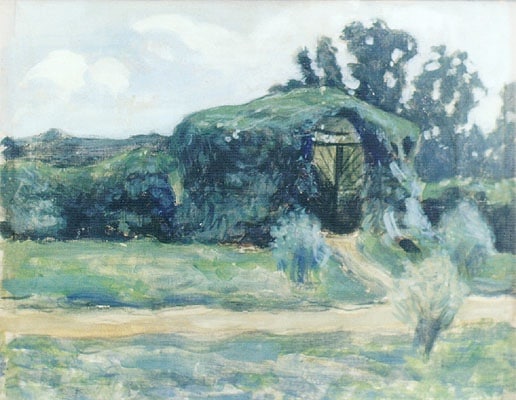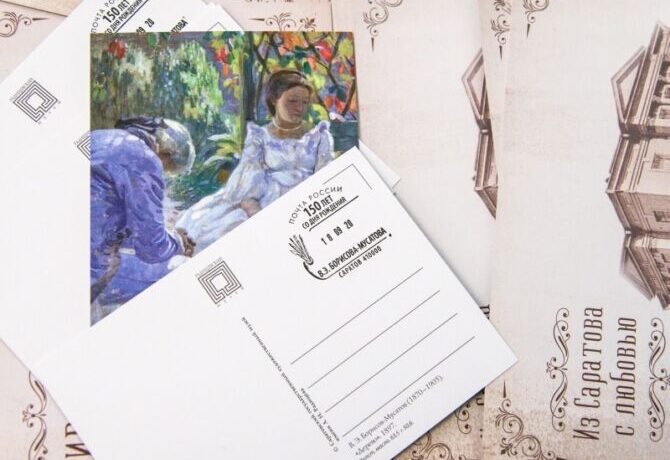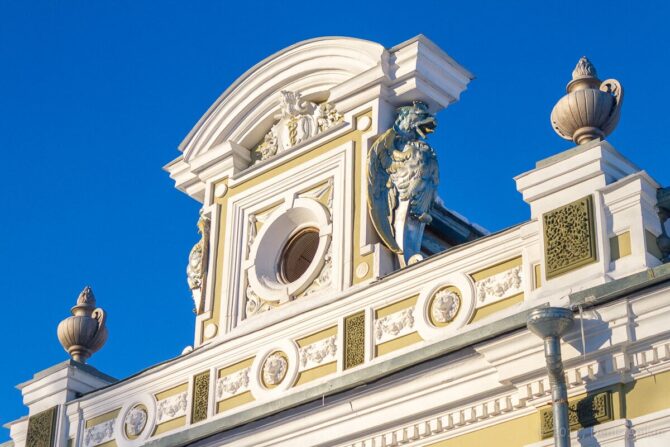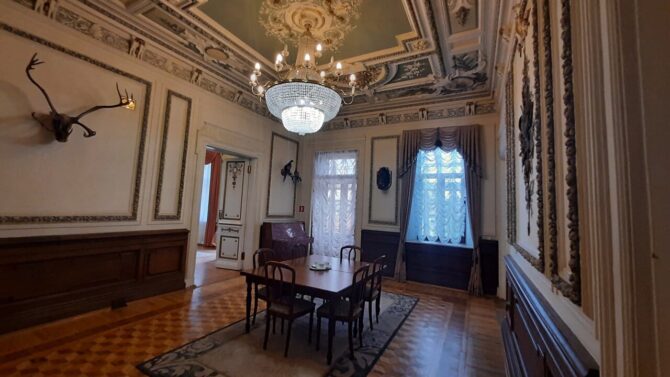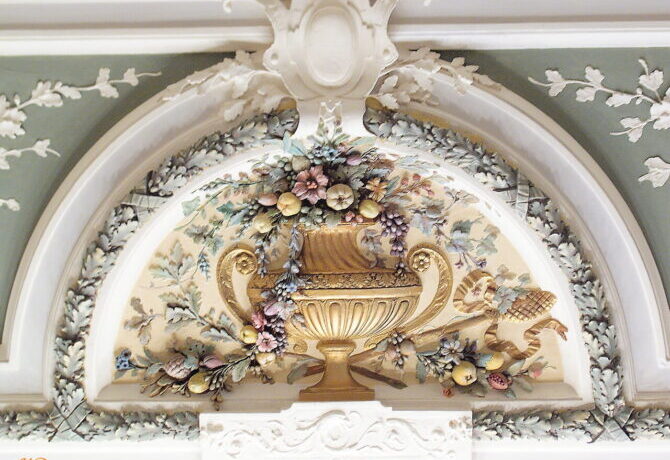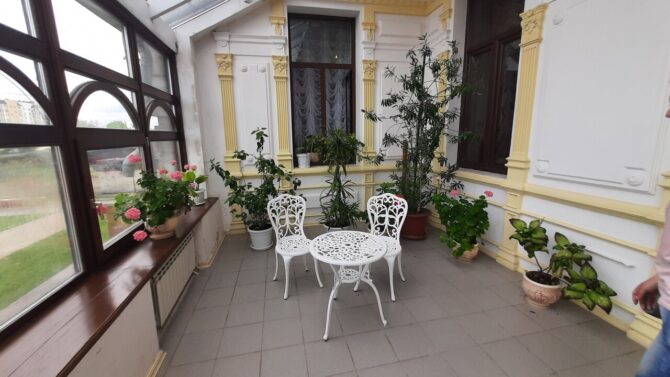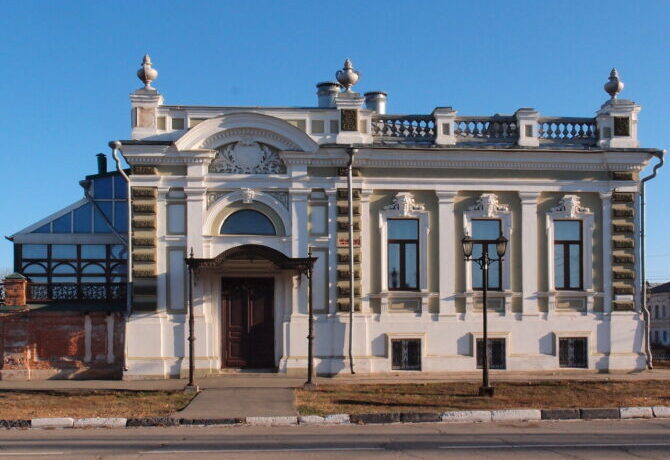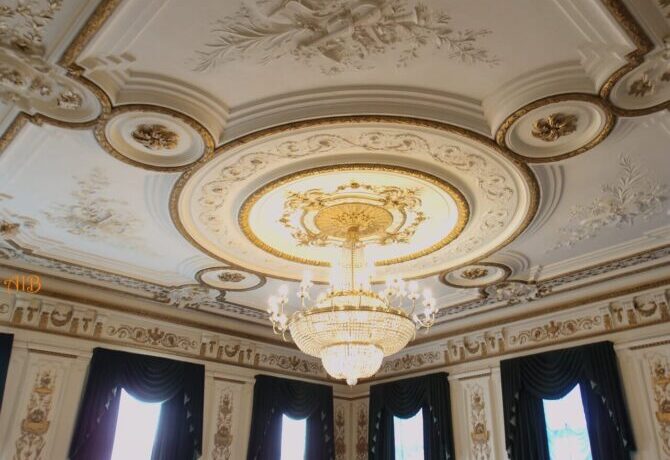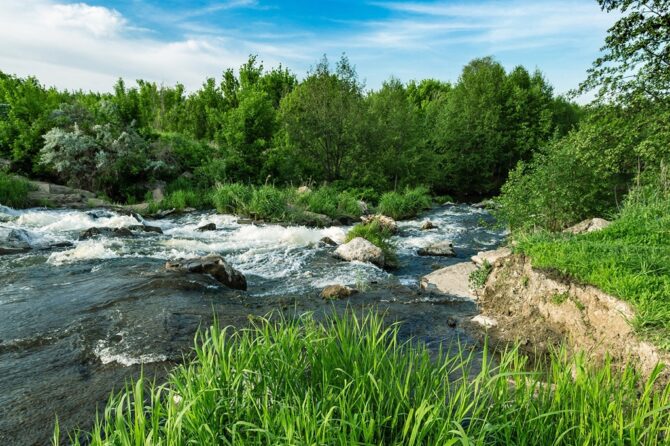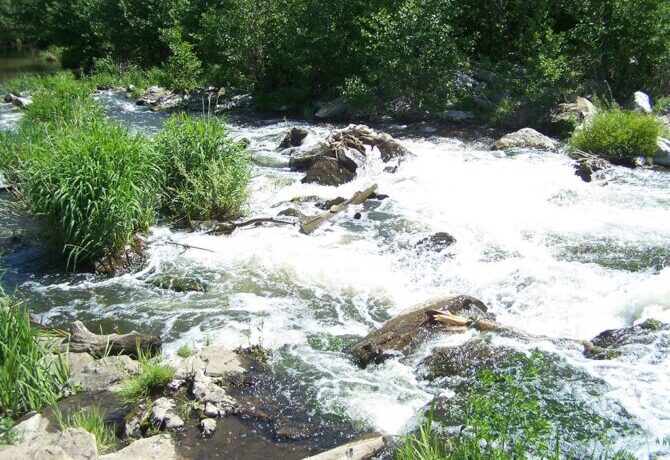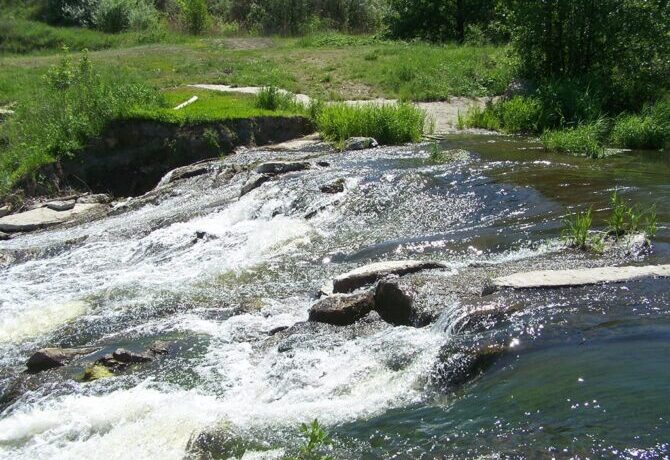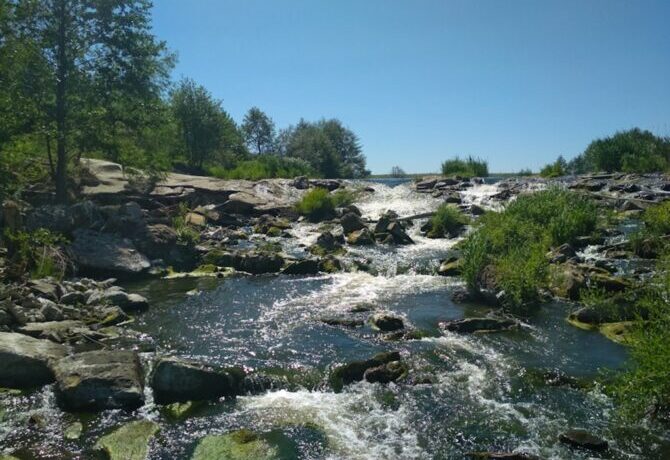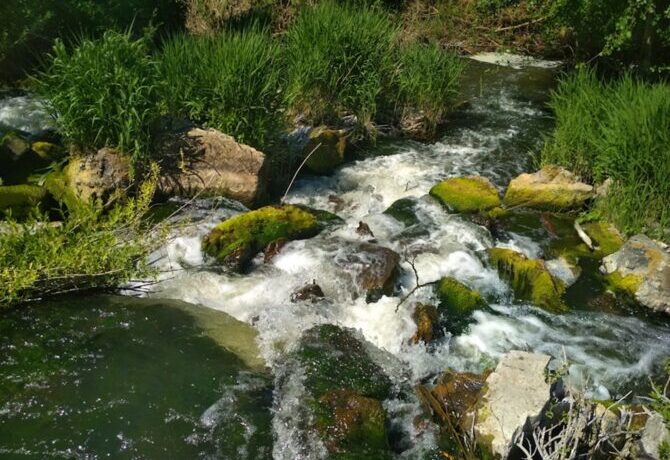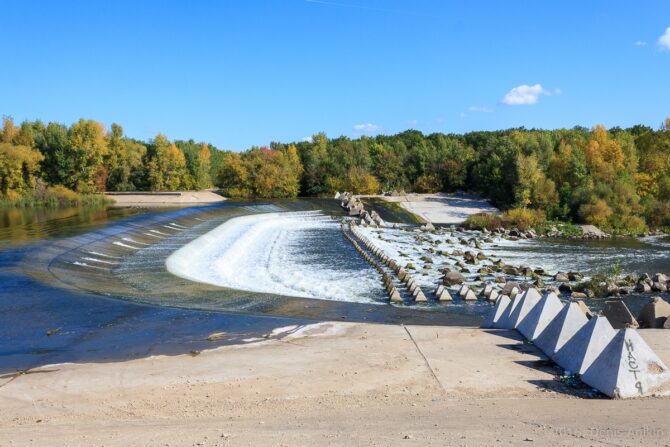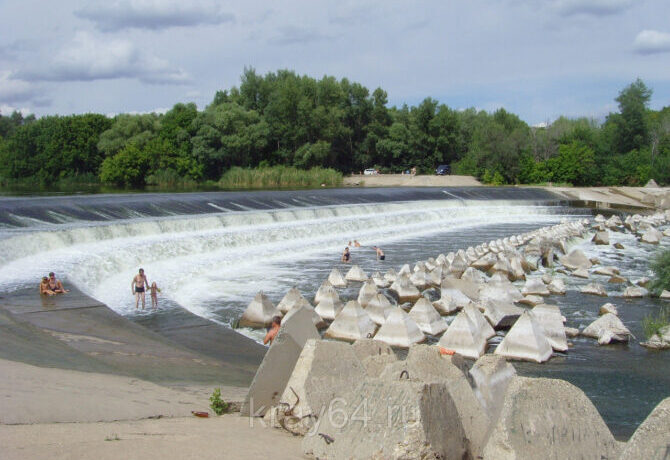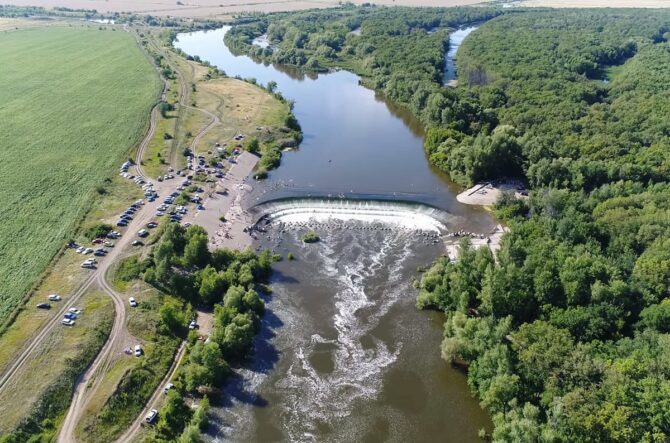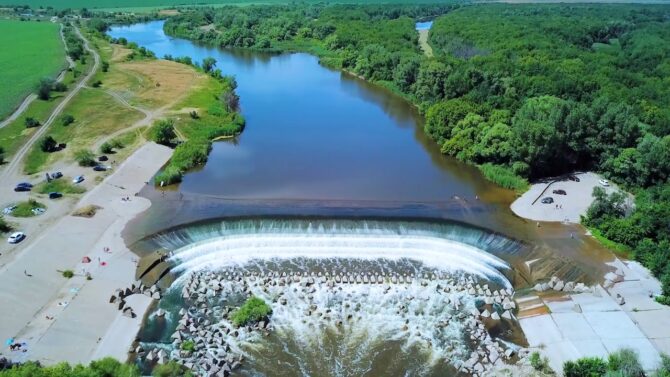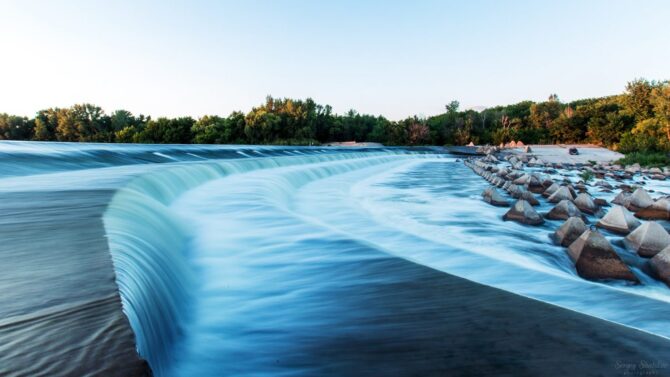The city was founded in 1590 in the form of a fortress to protect Russia from raids from the south. Later it became a transit point for caravans with salt and fish, and since the 19th century it has become a major center for the grain trade. In past centuries, wealthy merchants built many beautiful buildings, which have now become local landmarks. The Soviet period added new interesting objects associated primarily with the memory of the Second World War. Saratov became a “city of labor valor”. Today, the historical center and cultural sites have been restored and put in order for the most part. New places and leisure activities were added to them. About the best sights of Saratov and the surrounding area will tell this review.
- 1 Attractions Saratov on map
- 2 Embankment of Cosmonauts
- 3 Saratov Bridge
- 4 Museum-estate of Chernyshevsky
- 5 Museum of Local Lore
- 6 Church Quench My Sorrows
- 7 Holy Trinity Cathedral
- 8 Kirov Avenue
- 9 Art Museum named after A. N. Radishchev
- 10 House-Museum of P. Kuznetsov
- 11 L.V.Sobinov Conservatory
- 12 National Village of peoples of Saratov region
- 13 Falcon Mountain
- 14 Museum of Samovars
- 15 Saratov Limonarium
- 16 Museum-estate of Borisov-Musatov
- 17 Paisiy Maltsev Manor
- 18 Waterfall “Chardym Stones”
- 19 Waterfalls on Irgiz
Attractions Saratov on map
Embankment of Cosmonauts
Talk about the Saratov embankment began in the 19th century, but for the first time it was built only in the 1950s, using typical slabs and reinforced concrete. The embankment with a length of 1.5 km borders on the square on which the monument to cosmonaut Yu.A.Gagarin is erected. In [y], the city authorities completed a large-scale reconstruction and added some decorative elements. A new canvas of asphalt with a dedicated bike path was laid, curbs and a small musical fountain were installed, which in the evening, in addition, glows. The height of the jet reaches 40 meters. The infrastructure of the embankment is plastic café-bars, bio-toilets and rare benches. In the park there are cultural objects: a rotunda and a couple of sculptural compositions on the theme of love. There is a rental in which you can rent rollers, bicycles, scooters and other sports equipment. From the embankment there is a wonderful view of the Volga and the bridge, under which ships sometimes sail. A refreshing trip on a pleasure boat is relatively inexpensive, is considered one of the mandatory entertainment for tourists who want to see the summer Volga flavor. Citizens come here to breathe the fresh river breeze and enjoy the panorama of the mighty river. They say that the embankment in Engels is made more interesting: with a beautiful wrought iron fence, comfortable benches, and flowers, decorative bushes and trees of different species grow on the alley. Walking there is a pleasure, so it makes sense to visit the embankment in Engels, if the opportunity presents itself.
Saratov Bridge
Built in 1965, the Saratov bridge has a length of 3.5 km and connects the city with Engels. It offers stunning views of the Volga and coastlines. Approximately in the middle of the river is an island on which the city beach called “Golden Sands” is arranged. Such a solution is rarely found anywhere in our country. The descent from the bridge to the island is arranged on both sides. The beach, of course, requires landscaping and investment: it is dirty around, the old café is famous for its crazy price tag, and the only toilet is like a decoration for a horror movie. However, the water in the Volga is clean and warm, in season you can swim and sunbathe enough. After installing bright lighting along the entire length of the bridge, this Monument of the Soviet era began to look especially beautiful at night. All postcards of Saratov depict the bridge as an unconditional symbol of the city.
Reference: in the city there are a large number of cafes and restaurants. Local specialties are inextricably linked with the river: boiled crayfish, cake “Volga”, dried and fried fish. Saratov kalach and the variety of local bread are also attributed to the gastronomic attractions of this region.
Museum-estate of Chernyshevsky
Revolutionary democrat, Master of Russian Literature N.G. Chernyshevsky with his publications and articles successfully shattered the foundations of the state, trying to cause universal hatred of the tsarist power. Marx and Engels called him “the head of the revolutionary party.” The most famous work called “What to do” the revolutionary wrote already in the cell of the Peter and Paul Fortress. Gendarmes called Chernyshevsky “enemy of the Russian Empire number one.” It is not surprising that the writer spent more than 20 years in hard labor and in exile. The museum named after him is located in the city center on the embankment, being arranged in a colorful small mansion with a mezzanine, built in the 19th century. Exhibits of that time have been preserved: furniture, books and things that once belonged to Nikolai Gavrilovich and his wife. In the reviews, tourists write about the special school atmosphere, which was arranged by the rude museum staff to give the excursion the spirit of Chernyshevsky’s life. “They lead around the rooms like criminals under escort” – this is how students of the Faculty of Philosophy described a visit to the house with a mezzanine.
Address: Chernyshevskogo str., 142
Museum of Local Lore
The object is located in an old building of the 20s of the 19th century, built as a pompous residence by a rich merchant Ustinov, who traded in wine and salt. The exposition of the Saratov Museum of Local History amazes with its size: 33 halls on two floors. Here are collected collections of finds, artifacts and unique things found during excavations or transferred to the museum. The review begins with the first people of the Paleolithic, and ends with the original training aircraft of the Yak-18 brand, on which Yu.A. Gagarin learned to fly. Of great interest is the hall of antiquities of the times of the Golden Horde. Also a separate topic is P.A. Stolypin, the famous reformer and statesman, who became famous already being in the post of Saratov governor. Other interesting collections: stuffed animals and nature, Christmas tree toys and astronautics. Children also like stands about steam locomotives, weapons and the life of ancient people. Of the unusual, it is worth noting: the cabin of a real trolleybus, crystal products of local manufacturers and a funny stand with the work of the singer Valeria. Such famous people as actors O.Tabakov and O.Yankovsky, aircraft designer O.Antonov and composer A.Shnidke donated their personal belongings here. In other words, you will not be bored here, considering such a variety of materials.
Address: Lermontov str., 34
Iskander12 writes a review: “a beautiful developing museum, we lead children twice a year and do not get bored. It is interesting to study the history of Saratov on maps and chronicles, household details and costumes. The staff are polite, smiling, there is some elusive provincial charm inside. There are, of course, disadvantages: old stands, creaky floors, and most importantly – this is a terrible and smelly toilet that has not been repaired since Soviet times. “
Church Quench My Sorrows
Initially, this miniature building was conceived in the form of a chapel, and later as a house church of the archbishop of the Saratov diocese. Work on the construction lasted from 1903 to 1906 with the blessing of the Hieromartyr Hermogenes, who, according to legend, ordered the temple icon “Quench my sorrows” on Mount Athos. In Soviet times, the church was looted, crosses were removed, and a planetarium was built inside. In 1990, the temple was returned to believers. Later, a large-scale restoration was carried out, after which this beautiful church became the unconditional architectural dominant of the district. Multi-colored domes arranged around the tent, in miniature repeat the tops of St. Basil’s Cathedral. Inside, although cramped due to the small size of the building, but there are several antique icons of the 17th century. The temple is active, a choir of seminarians sings at the service. Nearby is the city park “Lipki” and the old building of the conservatory.
Address: Volzhskaya str., 36
Holy Trinity Cathedral
The construction of the temple in the style of “Moscow Baroque” dates back to 1647. The hipped bell tower is made in the style of “Yaroslavl candle”. This is the oldest building in the city of the surviving. In 1919, the revolutionary authorities shot the abbot, in the 30s they closed the temple, but in 1942 they reopened. Inside there are beautiful interiors: the walls are decorated with frescoes, a considerable number of antique icons have been preserved. The spiritual atmosphere, the beauty of divine services, the prayerfulness of the place is preserved by the priest and believers. The main shrine is the miraculous image of the Savior not made by hands. The temple is two-level, accommodates the aisles: the upper Trinity and the lower Assumption. To the left of the Trinity Cathedral is a beautiful square with a rose garden and a pond in which goldfish swim. A bridge is thrown across the pond, a comfortable children’s playground is arranged nearby. At the temple there is a Sunday school, a shop with fresh pastries and a free toilet.
Address: Moskovskaya str., 6
Kirov Avenue
In 1983, Kirov Avenue became the main pedestrian street of Saratov, having a length of about 1 km. Once the Volga Germans settled here, later – captured French. Partially preserved buildings of the 19th century, diluted with buildings of the Soviet era in the style of “New Life”. Today, on the first floors of these houses there are numerous souvenir shops, clubs, cafes and shops. Noteworthy is the building of the former hotel “Astoria”, erected in the European style of the 19th century with figures of knights on the roof. Sidewalks of tiles and lanterns for antique add color to the whole street. Sculptures were erected: to an unknown lover and a Saratov harmonica. The avenue begins with the ensemble of the central market in the style of “Modern”, built in 1914-1916. The pedestrian zone ends at the building of the Saratov Conservatory named after L.V. Sobinov, where a monument to N.G. Chernyshevsky rises in the square.
Art Museum named after A. N. Radishchev
The museum was founded in 1885 and became the first public collection of painting and sculpture in the Russian Empire. It is located in a pre-revolutionary building with a beautiful wrought iron staircase. It was founded by the artist A.P. Bogolyubov – the grandson of the writer and statesman A.N. Radishchev. Mr. Bogolyubov donated many paintings here and named the collection in honor of his grandfather. The paintings of the great masters are presented: Aivazovsky, Repin, Rokotov, Petrov-Vodkin, Somov, Levitan, Savrasov, Polenov, Vereshchagin and others, all and not to list. A separate hall is allocated for antique icons and church utensils. The exhibition is complemented by ancient sculptures and a collection of porcelain. This is a very stylish and atmospheric place where guests of the museum meet with beautiful creations of painting and art. Temporary traveling exhibitions also often come here, the presence of which can be found on the museum’s website. When visiting, it is recommended to use the audio guide or book a tour.
Address: Pervomayskaya str., 75
Pavel and Nadezhda write a review: “we got a great aesthetic pleasure by visiting this collection. I really liked the landscapes of French, Russian and Italian masters. I remember the paintings of Bogolyubov, Grabar, Vinogradov. We were on a weekday when children under 18 years old are free of charge. The impression was spoiled only by the rudeness of the staff in the wardrobe. There were two of them: both pounked on the French guest. It’s a shameful sight.”
House-Museum of P. Kuznetsov
The three-storey house-museum of the artist P.V. Kuznetsov (1878-1968) was built in the provincial urban style and is used as a branch of the museum of A.N. Radishchev. Temporary exhibitions are often placed here: fairy-tale horses, Volgograd artists, paper Christmas and others. This place is popular with young people and connoisseurs of contemporary art. The permanent exhibition presents the life of an artist who lived very ascetic: easels, brushes, kiots, chests, paints and the smell of wood. The authentic atmosphere of that time is preserved. Museum staff will talk about the life and work of Pavel Kuznetsov. The memorial house-museum was built on the edge of the Glebuchev ravine, not far from the river station and the Saratov bridge.
Address: Oktyabrskaya str., 56
L.V.Sobinov Conservatory
In 1902, the most beautiful building in Saratov was built. The main motive is the imitation of the Gothic castles of medieval Europe. Stylized hipped towers and stucco, chimeras and unusual decorations – all this immediately attracts attention. However, the general appearance of the ensemble is sustained without merchant “overkill” when choosing the details of the design, the building looks both fabulous and restrained. Probably because the Germans built. Today, the enlightened part of the townspeople considers the conservatory a symbol of the city, in defiance of the Soviet period with a bridge structure. People come here to listen to the organ, ensembles of songs and dances, combined choirs or piano music of the world’s best composers, such as Beethoven, Bach, Schumann, Piazzolla and others. Experts note the “delightful” acoustics inside the building. Opposite is a square with a fountain and benches, also nearby are a park and a stadium.
Address: Kirov Avenue, 1
National Village of peoples of Saratov region
In Victory Park in 2003 opened the first in Russia village of national peoples inhabiting the Saratov region. It was conceived in such a way that tourists could enter each house, as in a museum. Inspect everyday life, clothes, interior, learn about cultural values and try national dishes. Today, most of the ensemble has already been built: a Ukrainian farm, a German house, a Bashkir yurt, a Kazakh aul, a Mordovian estate, a Russian house with a bath, etc. I must say that this is a very colorful remake, as close as possible to ancient samples. Azerbaijanis built a “Maiden Tower” with a height of 16 meters near their house, from which fascinating views open. Koreans have built a pagoda and a “garden of stones”, Uzbeks cook pilaf in the teahouse “Sogdiana”, and Belarusians treat with moonshine and pancakes in their hut. Some residents of Saratov donate here things of ancestors that add authenticity, convey an atmosphere of genuineness. However, instead of the expected commercial success and unity of cultures, the village suffered a sad fate. The thing is that to the nearest stop on foot to go 1.5 km. Tourists do not reach the village, and few people know about this attraction. As a result, most houses and cafes are open only for big holidays. Reviews of people leave the impression of doom: “I liked this place. It would be good if the houses were open, and then only through the fence looked at the facades. ” Another review: “a flawed place. No knowledge, no ingestion. Why did they build if everything is closed?”
Address: 60th anniversary of Victory str.
Falcon Mountain
On the top of Sokolova Mountain in 1982, the monument “Cranes Are Flying” was opened, dedicated to the victory in the Second World War. There is also an observation deck, which offers a wonderful panorama of the Volga and the city – the best place for photo shoots. In the old days, the robber Sokolov, later the detachment of Emelyan Pugachev, raged on this mountain. The neighboring village until 1961 was called “Razboyshchina”, after which it was renamed “Sokolovy”. Another version is that falcons were bred on the mountain for hunting, but this is unlikely. Today there is a Victory Park with an eternal flame, a fountain of memory, a stele with the names of the dead, an exposition of military equipment, flower beds and paths. Tourists can see the rare train, commanded by Pavel Tabakov – the father of the famous actor and director Oleg Tabakov. In the center on the Friendship Square there is a new church, a monument to the liberators of Berlin and various thematic compositions. In Victory Park there are two large museums of military and labor glory. From one you can go to another, because. buildings are interconnected. The exposition contains products of local factories of the pre-revolutionary and Soviet period, memorabilia and artifacts. The pride of the collection is the only surviving copy of the Yak-1b aircraft, transferred to the front by one patriot-collective farmer. Also interesting: colorful American military car “Willis”, appeals and letters to Stalin, tractor “Dwarf” designed by Yakov Mamin and much more. Here you can spend hours looking at the stands and compositions.
Max Kovalev writes a review: “beautiful views of the city from the top of Sokolova Mountain. We discovered the museum of military and labor glory, remained impressed. In two large halls mixed Soviet and German exhibits: uniforms, stripes, weapons. Even in Saratov, there was once a developed industry: refrigerators, composters and even television equipment. There’s a thing to remember! Tanks, missiles, planes in Victory Park are no less beautiful. But the “National Village” turned into a sense of shame after inspection. “
Museum of Samovars
Arriving in an unfamiliar city, I want to get acquainted with something original, with the local exotic. In Saratov, such a place can be considered a private museum of samovars, which is not as easy to get to as we would like. You need to agree on a visit in advance, besides, it is important that a whole group of guests gather on this day. The exposition, which is located in several halls, presents more than 700 samovars of the 19-20 centuries. The smallest has a volume of 50 grams, which can be boiled with two matches. Of the unusual: samovar-steamer, heated, and there is a cooling function. Some specimens are real works of art. All presented products have ever been used for their intended purpose. The tour will tell interesting information and legends, as well as the history of the evolution of samovars in Russia. The final chord of visiting the exposition is a tasting – this part is most liked by children. The museum is very young: it opened in 2015. The owner of the collection, S.M. Gloizman is an oilman from Lukoil, a long-time collector and lover of samovars.
Address: Kutyakova str., 34/36
Saratov Limonarium
A visit to Limonarium in the stone jungle of Saratov is also an adventure from the category of exoticism. The object is not a very large greenhouse, where citrus fruits and various fruits are grown: tangerines, bananas, lemons, etc. The aroma inside is stunning, especially effectively perceived in contrast in winter. The tour lasts 10-15 minutes, so you can not order it at all. But here you can buy seedlings and grow at home, for example, lemon or tangerine. In addition to rare flora, representatives of the fauna live here: an iguana, a couple of rabbits and a fat cat. It is good to come to this place with children. Limonarium is located in the industrial zone in the middle of garages, before visiting you need to call and negotiate.
Address: Volga district, the territory of Sokolova Mountain
Museum-estate of Borisov-Musatov
The estate is located in the city center, consists of a wooden wing and a two-story building, lined with facing bricks. The memorial house with the exhibition today is part of the museum named after A.N. Radishchev. The exposition consists of only three halls. Two of them exhibit mobile temporary exhibitions, and the third is arranged in the former studio of the artist V.E. Borisov-Musatov. There are exhibits – personal belongings, household items and paintings of the artist. On the tour you can learn about the life and work of the master, the vicissitudes of his tragic fate. It is necessary to visit this chamber museum in the summer, since for the winter the paintings of Viktor Elpidiforovich are transferred to the building of the Museum named after A.N. Radishchev for the sake of preservation. The exposition of the memorial hall is small and nondescript in appearance – this should be taken into account before visiting, so as not to regret the time spent and not to be deceived in expectations.
Address: Volskaya str., 33
Paisiy Maltsev Manor
In the city of Balakovo recently restored the estate of the early 20th century, the interiors and stucco of which can envy the royal palace. The builder of the house, Paisiy Maltsev, was the local “bread king”, a rich merchant of the first guild. Famous specialists worked on the architecture of the project – F.I. Shuster and O.F. Schechtel. The house surprises with an advanced heating system and a developed network of underground passages. From the furniture, a large old mirror has been preserved, in front of which it is customary to make a wish that will come true – such a belief has developed among the simple-minded Balakovo residents. Also preserved: stucco, wrought iron porch, griffins and drainpipes. Furniture and parquet are restored, as well as a patio with a garden and a fountain. This estate is the only valuable architectural monument of the city of Balakovo and a mandatory item in the program of stops of wedding motorcades. In Soviet times, the Palace of Pioneers was located here.
Address: Balakovo, Kommunisticheskaya str., 75
Reference: water activities and beach holidays are popular with lovers of active leisure. Main services: yacht rental, sappboarding and makeboarding. For citizens and tourists in the summer organize trips to the islands, where you can have a picnic, swim and sunbathe.
Waterfall “Chardym Stones”
100 km from Saratov is a real waterfall on the river Chardym. In the area of the village of Mikhailovka, where two rivers merge together, there is a bottleneck with a large height difference. The water with a roar plunges down, foaming with splashes on large stones. The noise is such that almost no one can hear each other. Upstairs and in the surrounding area there are comfortable picnic meadows. Fans of spectacular photos make good photo shoots in this place. In a large pond there is a river fish, which local fishermen like to catch. On the pond from the side of the village there is a small sandy beach with a bridge for diving, where you can swim and sunbathe. The best time to visit the waterfalls is spring or the end of the torrential rainy season, when the rivers are most full-flowing.
Address: Novoburas district, Mikhailovka village
Waterfalls on Irgiz
Between Balakovo and Pugachev there are waterfalls on the Irgiz River. A beautiful cascade of hydraulic structures was built in this place. The best time to visit is when the dam discharges water. The muddy bottom and strong current make bathing unsafe, as it is easy to slip and break something. Despite this, every summer the waterfalls are clogged with both vacationers with tents and residents of the surrounding cities. A considerable number of families with children come, who like to sunbathe and refresh themself here on weekends. The shore is littered with garbage and scraps of sloppy Saratov residents. In the neighboring village, a grocery store that accepts cards for payment is thriving.
Address: Bykovo-Otrogsky district, Perekopnaya Luka village
In Saratov, there are many other interesting objects that are worth visiting. For example, Lipki Park, where it is pleasant to walk along shady alleys and see the tram car, which is more than 80 years old. Of the cultural institutions are popular: the Theater of the Young Spectator (TYUZ) and the Opera and Ballet Theater. Fans of space themes will certainly be interested in the place near Saratov, where Yu.A. Gagarin landed after the first flight into space. Now construction work is underway there, and by 2023 the grand opening of the Park “Conquerors of Outer Space” is expected.

